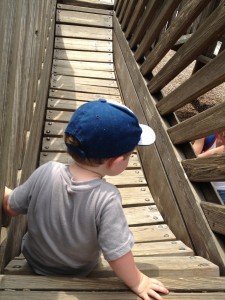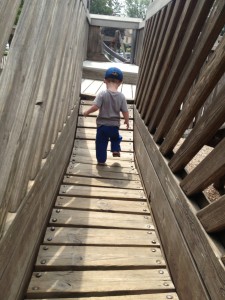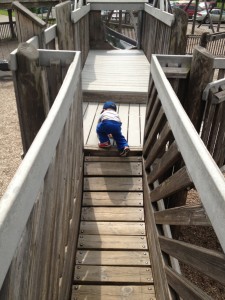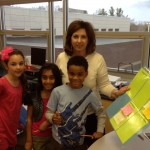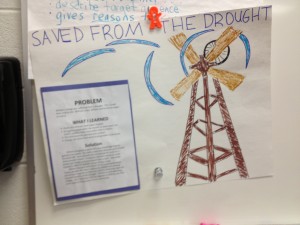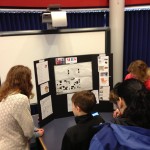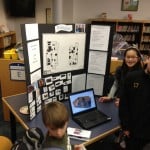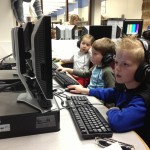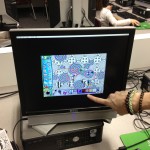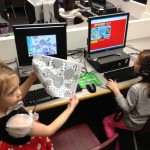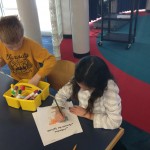Go Live: Focus on Meaning and Positive Progress
I’ve been thinking and reflecting on digital communication a lot lately, in part because of the high volume of e-mails that I send and receive each day, and in part because of the importance I place on modeling and teaching effective digital citizenship skills and strategies to those I serve. Most of the e-mails I get are intended to deliver information without emotion, and for my money that’s what e-mail communication should be used for. However, occasionally people use e-mail to communicate information about emotions, either overtly or surreptitiously.
When an e-mail containing any sort of emotional undertones or overtones comes across my screen I immediately go live. I do so, because I’ve seen too many emotional emails and e-mail chains grounded in heightened emotions perpetuate frustrated distractions and deteriorate relationships. My standard response to an emotionally driven email is a request for a phone call (voice to voice) or a face-to-face conversation. Again, I go live. When done with compassion, that request has the potential to shift what might have otherwise turned into a negative situation to a constructive interaction. It provides an opportunity to establish and enhance partnerships aimed at genuine positive progress.
No matter how intelligent, intuitive, of insightful a person is I don’t believe that anyone can truly read emotions effectively over a computer screen. Any emotional output delivered digitally is ripe for misinterpretation. Even emails that are not emotionally driven can often times be misinterpreted as such. In education, because we communicate with diverse groups of stakeholders about inherently emotional content (the health, wellbeing, and achievement of our children) it couldn’t be more important that we take extreme care in developing and exercising highly effective digital communication skills. And as we enhance our skills we must also take extreme care in helping our students, colleagues, and parent partners do the same.
For many valid reasons, it’s not always easy to be direct in telling people what we’re thinking or how we feel. Some people respond in harsh and negative ways to straight talk, some people try to avoid hurt feelings by skirting around issues rather than facing them head on, and some situations don’t lend themselves easily to open communication. For those and various other reasons, I would imagine that most of us receive and/or deliver suggestive or “passive-aggressive” messaging occasionally (or even regularly) in our personal and professional lives.
I prefer the term “suggestive” to the term “passive-aggressive” because I think that even through the frustrations inherent in a suggestive message it’s important to remember that there is meaning. Again, I’ve found both at home and at work, both digitally and voice to voice or face to face, that by working through the frustrations suggestive messaging often propagates and focusing on the suggestion(s) instead, I can mold potentially negative communications into opportunities for learning and growth. Also, the same is effective when I find myself pulled into a frustrated and frankly immature state of mind (and heart) in which I’m compelled to deliver suggestive messaging. Focusing on the message I’m intending to deliver helps me preemptively turn to more productive methods. It always seems to be more effective and I always feel much better about it.
In case you’re not clear on what I mean by ‘suggestive’ I’ll elaborate. In my experience, much of the suggestive messaging I receive comes through e-mail. It seems to be a comfortable format for many people to be expressive in ways they otherwise might not. For example, when I receive an e-mail laden with capital letters or riddled with extreme punctuation (like a dozen exclamation or question marks to end a sentence) I feel confident that the sender is frustrated or upset but unable to articulate that directly. I could be wrong, but with communication we have to always remember that perception is reality. By the way, of the hundred plus emails I receive each day, only a few of them fit this description. Even so, I find them impactful enough to reflect on in this way. Instead of being frustrated, which admittedly is my first instinct, I work hard to realize that there’s an opportunity in front of me.
Thoughtfully processing suggestive messaging with an open heart and an open mind, wishing the sender well, and seeking to understand the inherent suggestion helps me move forward in positive ways, and in my opinion, it serves as the likeliest way to satisfy the frustration of the sender while enhance my relationship with him/her (rather than deteriorating it by responding in kind). It doesn’t work every time, and even when it does I don’t always know, but no matter the outcome for the sender, this strategy consistently helps me stay focused and positive, and in my opinion it enhances my ability to learn and to lead.
When you think about it life is actually relatively short. While I don’t always get it right, I subscribe to the idea that we should each work to fill our own and each other’s with peace, joy, and opportunities positive progress. So focus on people’s messaging through their words and through whatever energy they project, and the next time you feel pangs of frustration as a result of some suggestive messaging coming at you through a computer screen, go live…you just might like it:).
Live. Learn. Lead.
Dream Big. Work Hard. Be Well.

